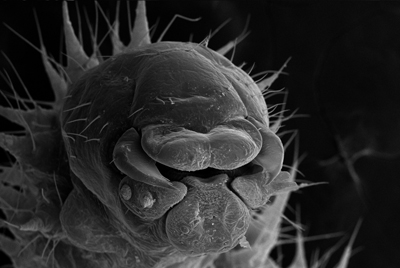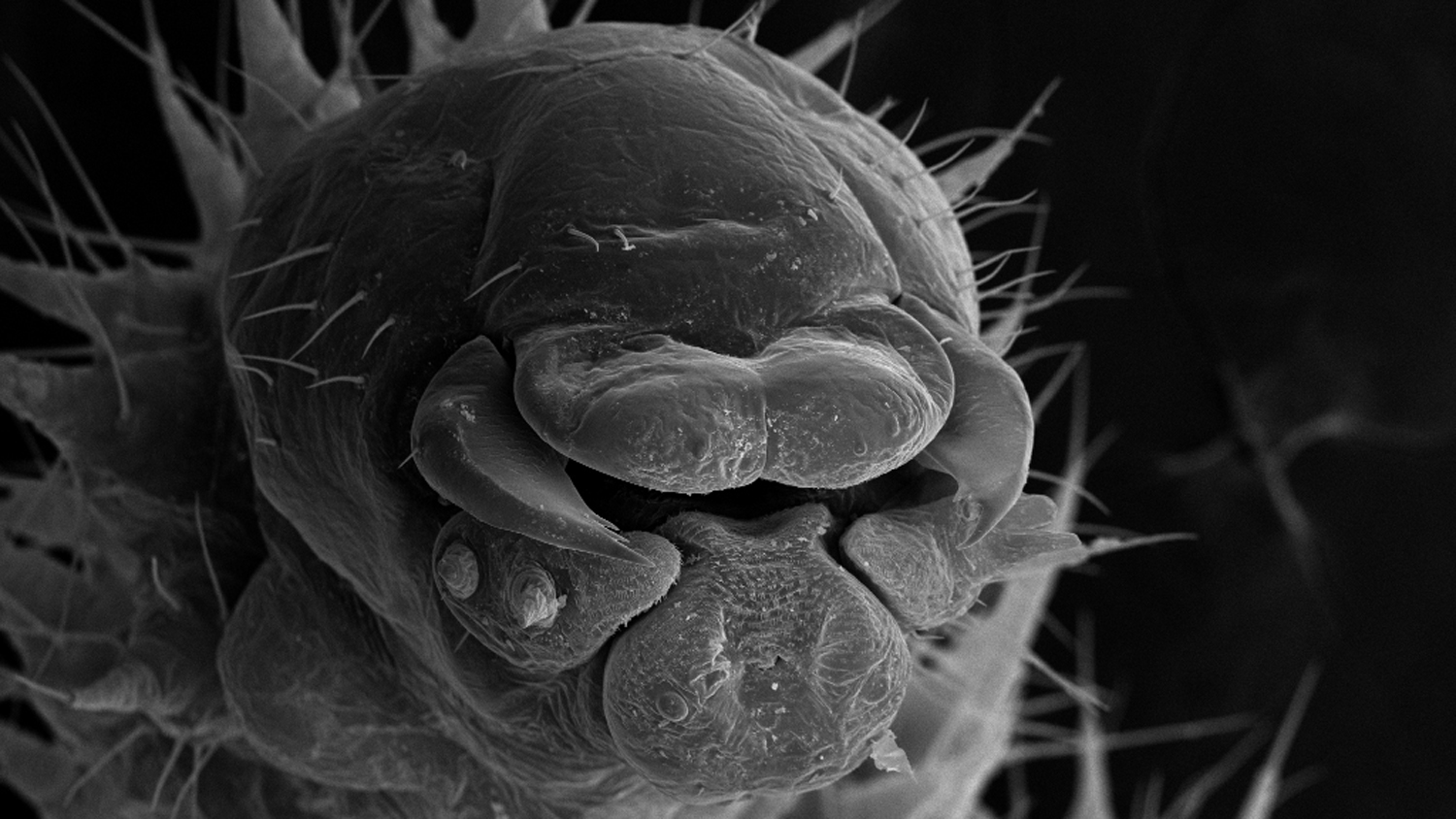Editor’s Note: This is a guest post by Adrian Smith, a research assistant professor at NC State University and head of the Evolutionary Biology & Behavior Research Lab at the North Carolina Museum of Natural Sciences. Smith is the co-author of a new journal article that offers insights into the biology of trap-jaw ants.
Trap-jaw ants, with their spring-loaded jaws and powerful stings, are among the fiercest insect predators, but they begin their lives as spiny, hairy, fleshy blobs hanging from the ceiling and walls of an underground nest. New research provides the first detailed descriptions of the larval developmental stages of three species of Odontomachus trap-jaw ants.

This research provides foundational knowledge which enables future research questions on developmental trajectories, such as when an individual might switch from developing into a worker to developing into a queen. Beyond furthering our understanding of these social insects, the work also offers us a little more insight into how the natural world works. We think that’s inherently valuable and, as these images show, nature can be visually fascinating.
While there are nearly 16,000 described species of ants, less than half of one percent of those have had their developmental stages, from egg to adult, described. The number of larval stages in insects can be variable, however our study finds that trap-jaw ant workers go through three stages of larval development.
This research determined the number of larval developmental stages, or instars, by measuring hundreds of larval head widths and body lengths and by identifying stage-specific anatomical features through scanning electron microscopy. These images revealed an amazing complexity of body parts such as four “sticky doorknobs” on the backs of first and second instars, used to adhere the larvae to nest walls and ceilings, complex “frustrum with spire” hairs of second and third instars, and silk-spinning “pseudopalps” of third instar larva. (A slide show of select images from the research is featured below, and is also available here. All original electron microscope images are freely available through CC BY 4.0 license here: http://dx.doi.org/10.17632/ssj7tytwzn.1).
Beyond providing the first categorization of larval stages for these ants, surprising results from the work include discovery of the “sticky doorknobs” which were previously studied in only one other ant species, developmental anomalies such as the appearance of additional doorknob protuberances, and the discovery of a larval parasite found in the gut of a third instar larva.
The journal article, “Larvae of trap-jaw ants, Odontomachus Latreille, 1804 (Hymenoptera: Formicidae): morphology and biological notes,” is published in the journal Myrmecological News. Lead author of the paper is Eduardo G.P. Fox, of South China Agricultural University. Our co-authors were Joshua C. Gibson of the University of Illinois and Daniel R. Solis of Sao Paulo State University.
- Categories:



